Parisian Women: The Musée d’Orsay Crowns Its Queen
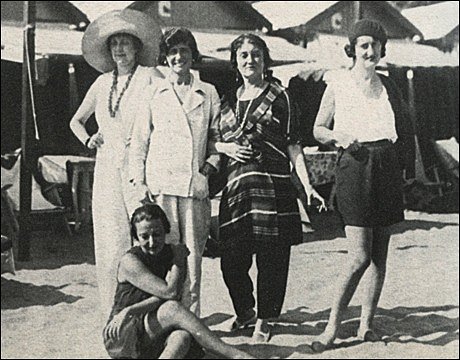
Mon 30 Jul 2012
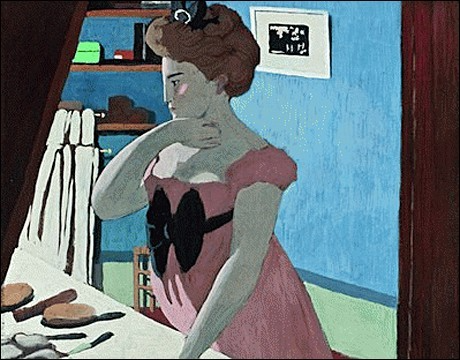
Misia at Her Dressing Table, by Félix Vallotton (detail). Musée d’Orsay.
Plenty of iconic Parisian women started out elsewhere. Take Marie Antoinette (Vienna), Elsa Schiaparelli (Rome) or Dalida (Cairo). The Polish beauty Maria Zofia Olga Zenajda “Misia” Godebska (1872–1950) was born in Saint Petersburg. Yet, over four decades, she was pivotal in the culture and fashion of Paris. With its enterprising expo “Misia, Queen of Paris,” the Musée d’Orsay celebrates this imperious man-eater.
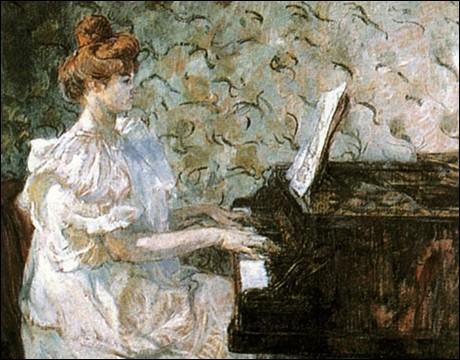
Misia at the Piano during Her First Marriage, by Henri de Toulouse-Lautrec (detail). Musée d’Orsay.
Born into a musical family, Misia trained as a concert pianist. Early on, however, she discovered equal adulation in the role of “muse.” She married a rich cousin, one of three men behind an avant-garde magazine. The artists who featured in it soon started previewing their compositions for Misia, reading her their poems and asking her to pose. The exhibition is filled with how such artists saw her, and portraits by names like Vuillard, Bonnard and Vallotton jostle for space.
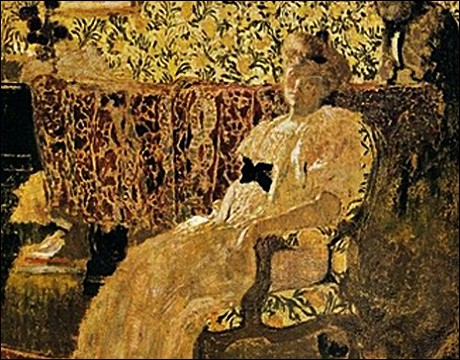
Misia painted by Vuillard (detail). Musée d’Orsay.
Toulouse-Lautrec was one early admirer (a small painting shows him busy cooking in Misia’s kitchen). But there are not just paintings and photographs by notable names; there are also posters, cartes de visite, jewelry—even Misia on china plates. Also on show is an amazing array of photographs, some from the very late 1800s. Meant to illustrate the range of artists in thrall to Misia, these also prove how modern the Impressionists were. Many were taken by the painter Vuillard; like Degas, he was hooked on the new thing of photography.
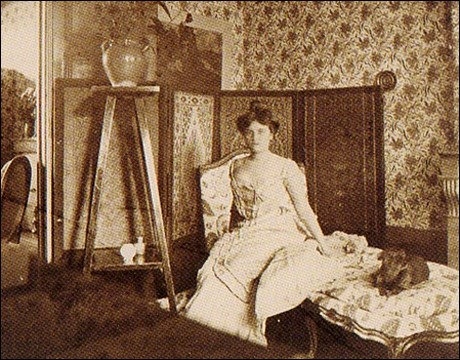
Misia posing in 9, rue Saint-Florentin. Photo by painter Edouard Vuillard (detail). Musée d’Orsay.
As one might imagine, some of the story is pretty spicy. When he was threatened by financial ruin, Misia’s first husband saved himself by “selling” his wife. Her new partner was the wealthy publisher Alfred Edwards, who installed his trophy in utter luxury. At the time, Parisian women saw this scandal acted out—in a hit play coauthored by Misia’s ex.
The fickle Edwards soon fell for a youthful courtesan. But Misia herself had also met someone else, the Catalan painter José María Sert. Sert took her from bourgeois splendor into the avant-garde—introducing his mistress to Cocteau and Diaghilev. As financial “godmother” of the latter’s Ballets Russes, Misia surmounted the role of mere inspiration and cemented the standing of her salon. (Her social ambitions were noted by Proust, whose arriviste character Madame Verdurin is based on Misia.)
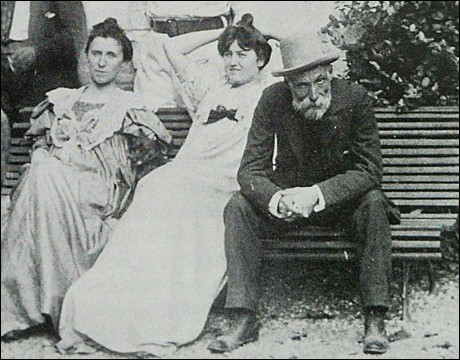
Misia (center) with Renoir after the funeral of poet Stéphane Mallarmé, taken at her husband’s country home (detail). Musée d’Orsay.
Just before World War I, while visiting a friend, Misia met a dressmaker named Coco Chanel. The two developed a highly charged relationship, which brought dramatic changes into each of their lives. Misia gave Chanel her most important clients, as well as lovers like the Grand Duke Dmitri and Igor Stravinsky. When Chanel sailed for Hollywood, she took Misia as insurance and, when Diaghilev died in Venice, Misia called on Coco for support. There are amazing photographs of all these escapades, as well as a treasure trove of letters, fashion pics and keepsakes. The latter include Misia’s personal brand of “art,” strange little bonsai trees made out of semiprecious stones.
The whole exhibition offers quite a dazzling portrait. But the out-of-control nature of Misia’s life is clear. Her temperamental acquaintances frequently savaged each other and few of them were above turning on their patron. Said Chanel herself, after Misia’s death, “We love people only for their faults; Misia gave me ample reason to love her.”
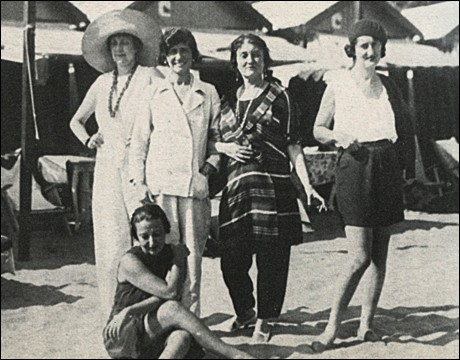
Chanel and Misia (center) on the Lido in Venice, surrounded by countesses, in a beach costume by Chanel. Musée d’Orsay.
Nevertheless, Misia remains fascinating. Her third and last divorce arrived at the end of a scandalous ménage à trois. This breakup sent Misia (with Coco) into the arms of morphine addiction. Yet, even as she started to lose her sight because of it, Misia was making herself over to stay in fashion. In her numerous photographs for Vogue—the best of which are by Horst—visitors see a woman in perfect sync with modern style. It’s hard to find that buxom star of the belle époque in Misia’s postwar, pencil-slim figure.
Coco Chanel survived her early sponsor by 21 years; before Misia’s funeral, she dressed and laid out the body. But, despite their unbreakable ties, the two women were polar opposites. Where Misia heedlessly squandered romance, riches and influence, Chanel guarded and invested all of them. Misia would do anything to attract a crowd. In exchange for an empire, Coco accepted solitude.
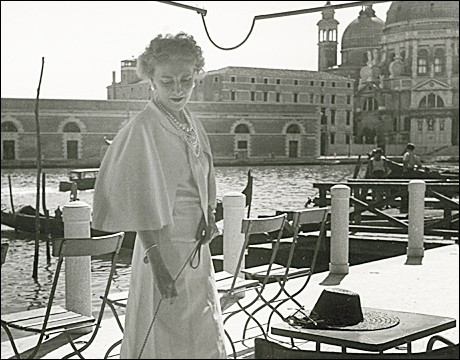
Misia in Venice, 1948 (detail). Musée d’Orsay.
These linked lives have become the stuff of myth. But the d’Orsay deserves credit for putting some depth in their story. What might have been just a collection of pretty pictures is presented as something much more interesting. Misia and Coco remain Parisian women of legend. But the exhibition shows why the roles—and choices—they faced were never simple.
TIP
Make sure you don’t accidentally miss three treats: Toulouse-Lautrec’s supersexy painting of Misia at the theatre (seen from the back in a low-cut dress); the incredible 1921 sketch of Chanel by Vuillard, an artist who actually hated his subject; Vogue‘s stunning 1948 photos of Misia in Venice. If you fancy gossip, there are copies of Misia Sert et Coco Chanel in the expo bookshop.
Related Links
“Misia, Queen of Paris”
Musée d’Orsay
José María Sert
Coco Chanel
Misia Sert et Coco Chanel
Editor’s note: Did you know that our walking trips, which are a huge favorite of our readers, are available as downloadable pdfs, and as apps for iPhones (via iTunes) and Android phones?